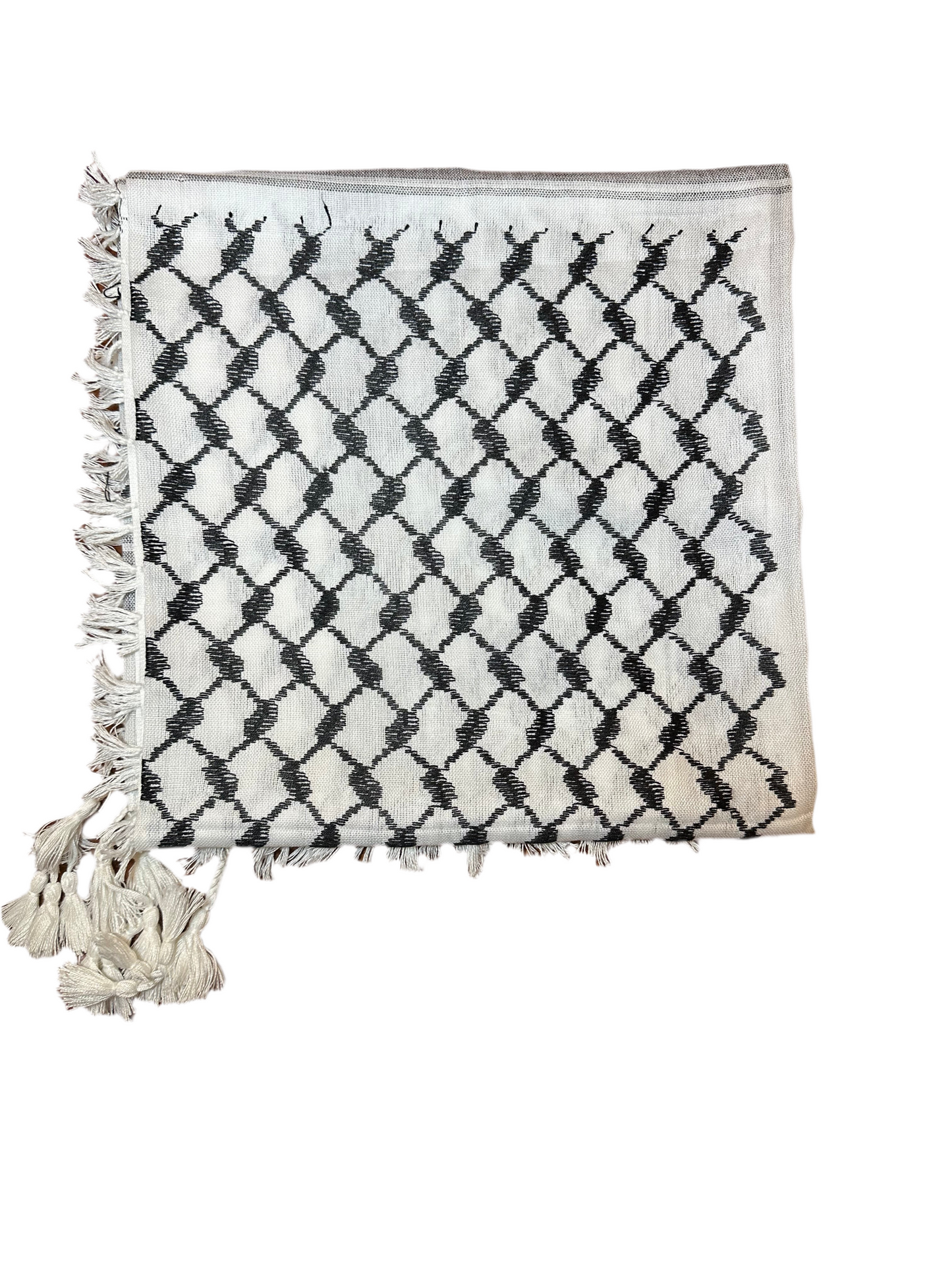Palestine Imports
Black and White Keffiyeh
Black and White Keffiyeh
Couldn't load pickup availability
The keffiyeh holds profound cultural, historical, and political significance, especially as a symbol of Palestinian identity and resistance. This iconic checkered scarf, traditionally worn in the Middle East, has become one of the most powerful symbols of Palestinian heritage, solidarity, and the struggle for freedom.
The association between the keffiyeh and Palestine goes beyond its role as a practical garment. Originally worn by Arab men in the Middle East to protect against the sun, dust, and harsh desert winds, the keffiyeh evolved into a potent political symbol during the 20th century. In Palestine, the keffiyeh became a visual representation of defiance, pride, and unity during the Palestinian national movement, particularly in the mid-1900s.
In addition to its political significance, the keffiyeh is a deeply rooted cultural artifact in Palestinian life. It represents not only the Palestinian people's connection to the land but also the strength and resilience of their identity. The checkered patterns of the keffiyeh, particularly the traditional black-and-white design, have become inseparable from Palestinian pride and solidarity.
The keffiyeh is far more than just a piece of fabric. It is a potent symbol of Palestinian identity, resilience, and solidarity. Worn by Palestinians as a sign of national pride, it also serves as a reminder of the enduring struggle for justice and self-determination. Today, the keffiyeh continues to be a powerful emblem of the Palestinian cause, representing not only the history and culture of Palestine but also a worldwide movement advocating for peace, rights, and freedom for all.
Share


